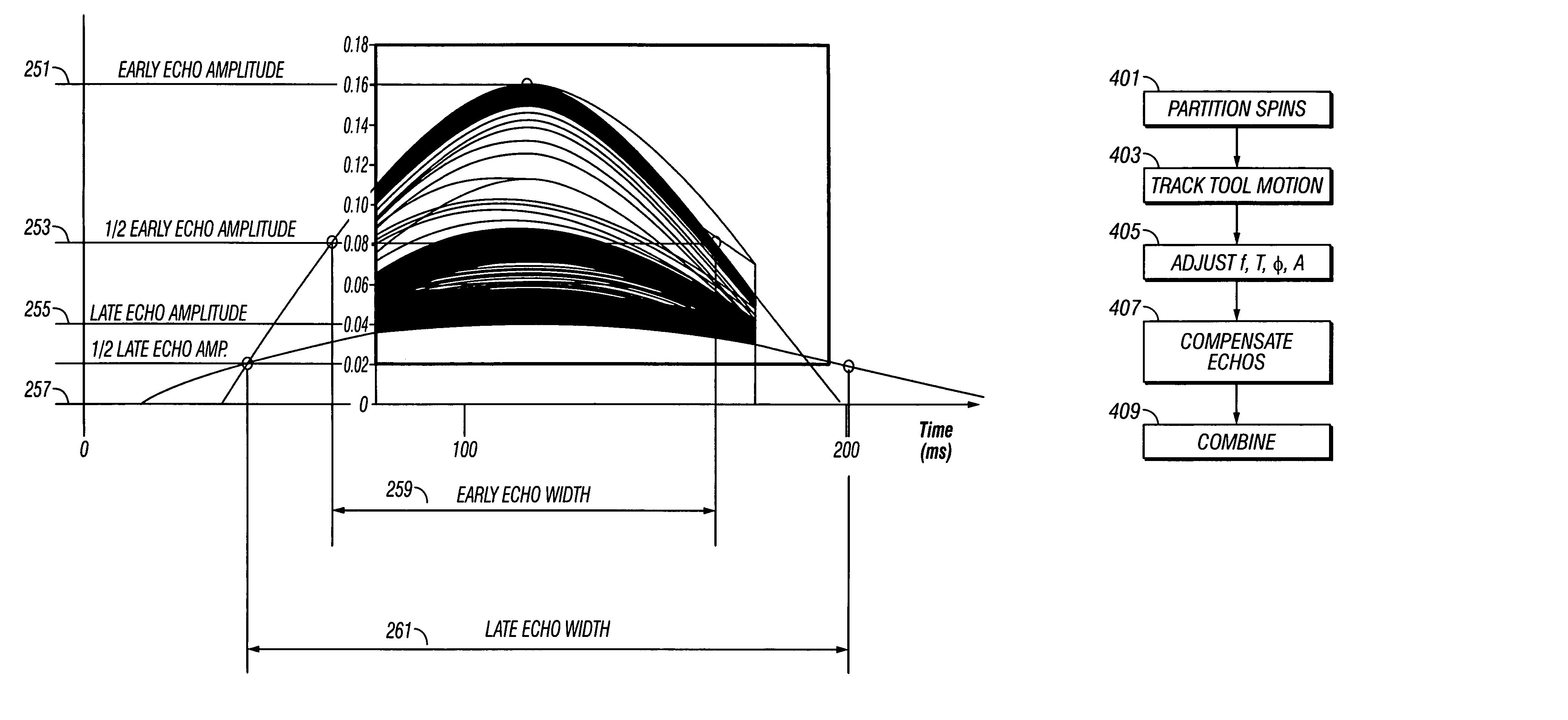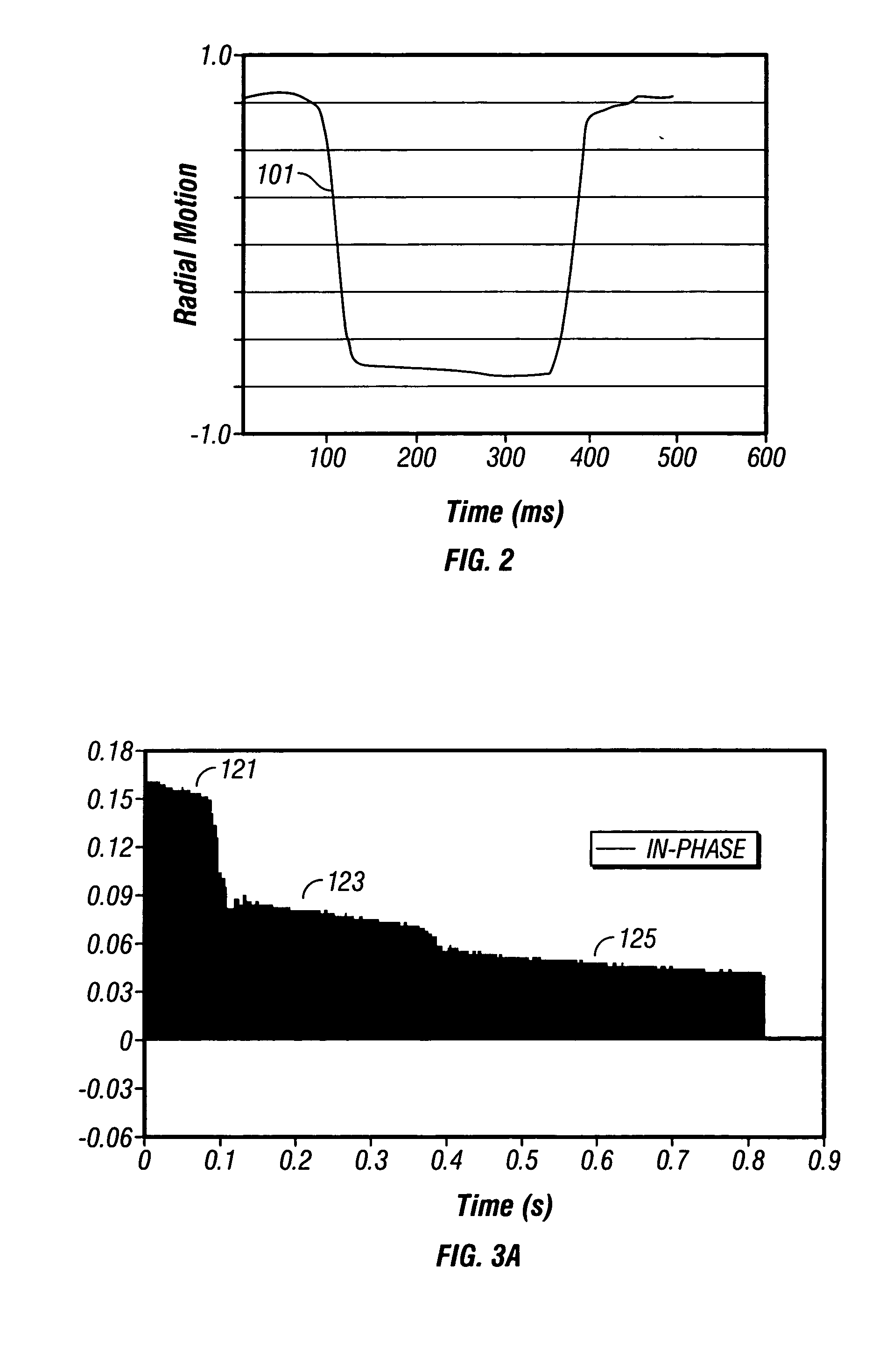Correction of motion influences in NMR signals
a technology of motion influence and nmr signal, which is applied in the direction of reradiation, measurement using nmr, instruments, etc., can solve the problems of limiting logging speed, time-consuming, and tool motion, and can seriously affect the performance of nmr tools used in an mwd environmen
- Summary
- Abstract
- Description
- Claims
- Application Information
AI Technical Summary
Benefits of technology
Problems solved by technology
Method used
Image
Examples
first embodiment
[0049] the invention is applicable without having the spins segregated into groups. It takes the measurement of the displacement as an input of the NMR simulation and calculates, based on the knowledge of field geometry and timing between motion and NMR sequence, a characteristic of the motion induced decay. The method then applies this characteristic as a correction for the measured NMR signals.
[0050] A flow chart for the first embodiment is given in FIG. 10. An echo train is obtained over the entire volume of investigation 501. This does not require the use of a directional tool. The tool motion is measured concurrently with the NMR data acquisition 503. Based on simulation data, a table of correction factors is derived for each echo 505. As discussed above, the tool motion is preferably derived from measurements with accelerometers, magnetometers, gyroscopes, or callipers. Using the derived correction factors, the echo train is corrected 507. Subsequently, the corrected echo trai...
third embodiment
[0057] In a third embodiment the NMR signal phase of a side-looking receiving antenna is used to get information about the tool motion. For this purpose one or more side-looking receiving antennas are used. Correcting of motion effects does not simply mean that for each echo and each side-looking receiver an individual phase correction is to be done. After such a phase correction there would still be considerable signal loss. Rather, the phase and frequency information extracted from each (side-looking) echo is used to get information about the motion and is used to correct the signal amplitude accordingly. The processing and correction of the NMR signals according to this invention can be done downhole or uphole.
[0058] Instead of a side-looking tool with just one receiving antenna, a modified axisymmetric tool is used where the single axisymmetric receiving antenna has been replaced by an azimuthal antenna, i.e. a number of side-looking receiver antennas around the circumference of...
PUM
 Login to View More
Login to View More Abstract
Description
Claims
Application Information
 Login to View More
Login to View More - R&D
- Intellectual Property
- Life Sciences
- Materials
- Tech Scout
- Unparalleled Data Quality
- Higher Quality Content
- 60% Fewer Hallucinations
Browse by: Latest US Patents, China's latest patents, Technical Efficacy Thesaurus, Application Domain, Technology Topic, Popular Technical Reports.
© 2025 PatSnap. All rights reserved.Legal|Privacy policy|Modern Slavery Act Transparency Statement|Sitemap|About US| Contact US: help@patsnap.com



